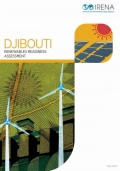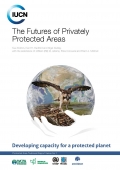Publication
Colombia is among the world’s top cattle-producing countries, with more than 23 million head of beef and dairy cattle occupying approximately 38 percent of the total land area. It is challenging to clearly correlate deforestation with specific agricultural commodities in Colombia, but...
The science is unequivocal: stabilizing climate change implies bringing net carbon emissions to zero. And this must be done by 2100 if we are to keep climate change anywhere near the 2 C. degree warming that world leaders have set as the maximum acceptable limit. Decarbonizing...
Djibouti faces critical challenges with power generation and distribution. Heavy reliance on fossil-fuel imports keeps the country exposed to price volatility, constraining economic development plans. But significant geothermal, wind and solar energy resources could...
This report aims to raise awareness about this type of protected area and provide a framework to show how privately protected areas can and should be reported nationally and internationally. The report is based on an extensive literature review, discussions with privately protected...
Zambia’s forest ecosystemsc ontribute US$ 1.3 billion, roughly 6.3 per cent of gross domestic product (GDP), to the national economy, further highlighting the crucial role forests can play in the global transition to a green economy, according to a new UNEP study.
The report...
This report shows that if current trends continue, up to 170 million hectares of forest could be lost between 2010 and 2030 in these 11 deforestation fronts, 10 of which are in the tropics. The fronts are located in the Amazon, the Atlantic Forest and Gran Chaco, Borneo, the Cerrado,...
The first version of the Energy Toolkit, a collection of leading instruments and methodologies for low-emission, climate-resilient development planning in the energy sector, is now available. The goal is to offer energy practitioners, policymakers, and experts a quick reference guide...










